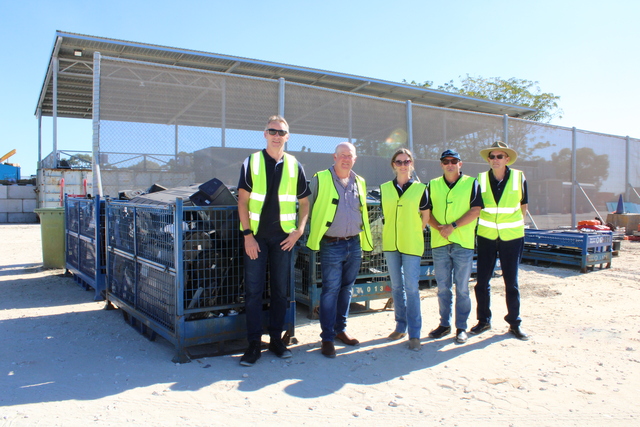Extending almost two kilometres from the shores of Geographe Bay in the Margaret River region of Western Australia, Busselton Jetty is the longest timber pier in the southern hemisphere. Also described as Australia’s greatest artificial reef, there are more than 300 marine species living under the jetty.
Every autumn and winter, a warm southerly current brings a diverse range of tropical and sub-tropical species into Geographe Bay, causing coral growth at a latitude of 33 degrees south. Known as the Leeuwin Current, this remarkable phenomenon does not occur on the west coast of other southern hemisphere continents, such as Africa and South America, which have no coral growth below five degrees south.
Doric Construction has built a $3.6 million underwater observatory 1.6 kilometres off shore and eight metres under water to allow visitors to be touched by nature as they look out onto the coral reef. The observatory features 11 viewing windows within a 9.5 metre diameter observation chamber that accommodates 40 visitors at a time.
The observatory is expected to attract an extra 60,000 visitors a year to Busselton, already judged Western Australia’s ‘Best Tourist Town’. It has a cast concrete base, three floors, a lift and 11 viewing windows that were imported from Japan. It is believed to be the only structure of its kind worldwide.
The submerged section was towed from Jervoise Bay to Busselton then sunk beneath the jetty at high tide. It was secured to the seabed by 17 anchors that were drilled through steel casings and filled with concrete. Its internal concrete walls are 300mm thick and 12m high.
The design of the visitor centre above the jetty complements the boatshed theme of the Busselton Jetty Interpretive Centre, which opened in April 2001. Attracting up to 200,000 visitors each year, the 138 year old jetty is the most popular tourist attraction in the south west region. The jetty train was established in 1995 and has carried 150,000 passengers over the water.
The jetty has survived fire and a cyclone, thanks to the tremendous support of the local community. Its history dates back to the American whalers who came to Busselton in square-rigged sailing ships.
In 1839, Governor Hutt appointed “the place in Geographe Bay opposite the Settlement at The Vasse to be the legal place for the loading and unloading of goods” but it was some time before a jetty was built on this spot. After strong and persistent pressure from settlers, construction of the jarrah jetty began in 1853. It opened in 1865 to local and overseas ships. Horse drawn trucks were used for loading until 1909, when the jetty railway was built.
In 1974 the jetty was closed to shipping and Government maintenance ceased. In April 1978, Cyclone Alby swept down the West Australian coast and destroyed a large part of the jetty. The State Government and Busselton Shire Council responded to community pressure for a complete restoration of the jetty. The Jetty Preservation Society, formed in 1987, has raised more than $9 million dollars over the past 15 years for further development.
The famous jetty today stands as a monument to the spirit and commitment of the Busselton community.
For further information contact Cape Naturalist Tourism Association Marketing Manager, Caroline Beamond, email nm@downsouth.com.au or visit www.downsouth.com.au







